14 Most Popular Archaeological Museums in Crete
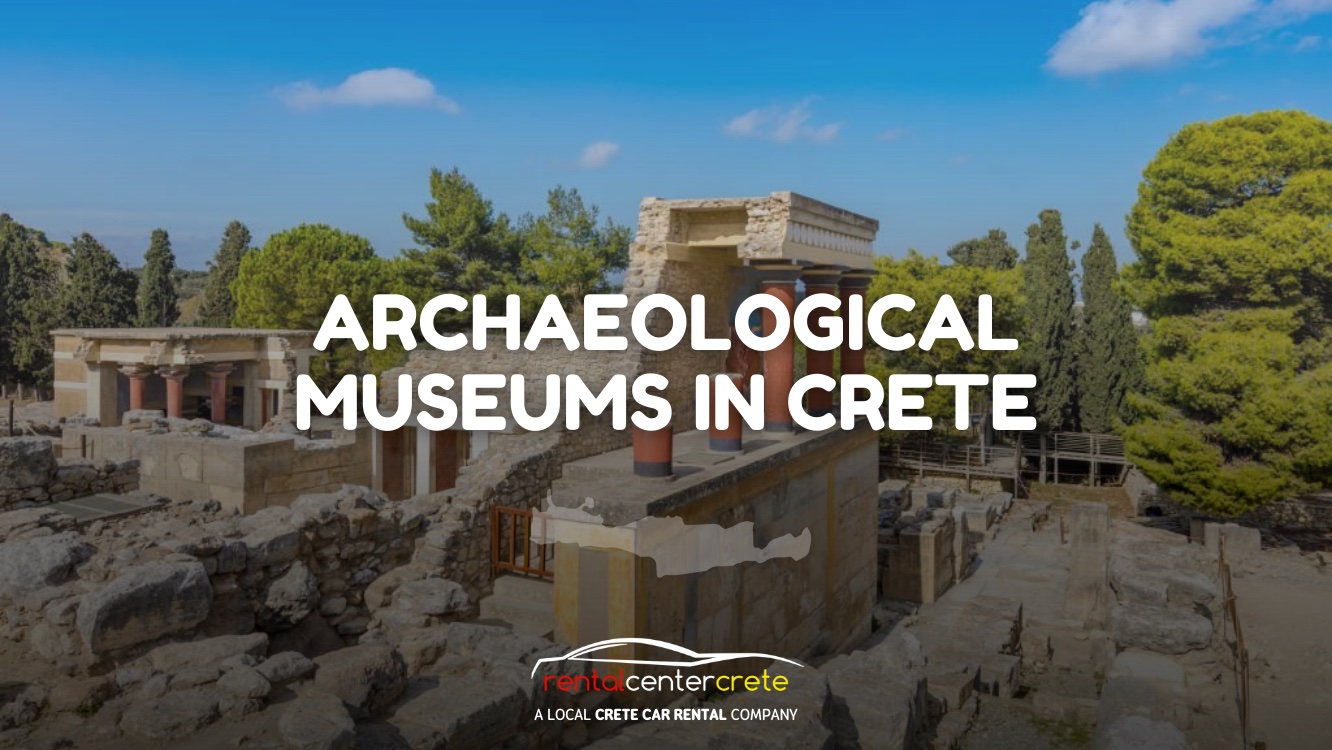
Museums are establishments; house art, artefacts and sculptures that are open to the public. There are different types of museums such as Archaeological, Art, Encyclopaedic, Historic and Military. Archaeological museums contain archaeological artefacts such as clothes, tools, weapons and pottery. These archaeological artefacts, sometimes called portable remains, are preserved for later generations to know how the ancestors used to live. The artefacts are used to present things that were invented or flourished before as well. Crete is one of the places in the world that is home to many archaeological museums. Crete is considered to be the largest island in Greece and home to ancient ruins and archaeological sites.
Crete is known to have beautiful beaches like Elafonissi Beach and Balos Lagoon. Tourists can access these sites via public transportation such as bus and taxi and via car rentals. Additionally, Crete is known for its magnificent foods and drinks, such as olive oil and wine. The place is known for its great history of wine and olive oil making. As for the museums, Heraklion Archaeological Museum is one of the two of the most visited museums in Crete. Heraklion Archaeological Museum is known to be an important museum in Crete, Greece. The place is known to have preserved the Minoan collection that is 5,500 years old. Furthermore, there are three known main archaeological museums that are situated in Crete.
Listed below are the main Archaeological Museums in Crete.
- Aptera Archaeological Site: It is the museum where Roman artefacts are kept. These Roman artefacts are baths, villas and theatres.
- Malia Palace Archaeological Site: It is considered to be the most provincial palace in Malia. The artefacts that are found inside are a bee pendant, sceptre and kernos.
- Knossos Palace and Archaeological Museum: It is one of the most visited museums in Crete. The site was destroyed twice because of an earthquake and fire, but was never restored and left exactly how it was.
1. Aptera Archaeological Site
The Aptera Archaeological Site began way back in the Minoan Period, Geometric Period, Hellenistic Period and Roman Empire. It is located in Aptera Apokoronas, Crete, which is the western part of Crete. It is situated in the inner part of Souda Bay. To get here, take the 90/E75 westbound along the coast. It is open from Tuesday to Sunday from 8am to 8pm. The museum is considered to be one of the most interesting archaeological sites in Crete. The entrance of the site is situated close to the Monastery of Agios Ioannis Theologos. Since there is still an ongoing pandemic, visitors must follow a protocol to keep them safe. The visitors must keep their distance at least 1.5 metres from each other. There are floor markings that are placed inside and outside the museum for the waiting lines. Inside the museum, there are a lot of Roman ruins that are displayed as artefacts. These ruins are Roman baths, Roman villas, three-vaulted Roman cistern, temple, necropolis, monastery and ancient theatre of Aptera. The Roman cisterns act as the Romans’ source of water. The ancient theatre was built out of limestone. The entrance fee for Aptera Archaeological Site costs about €4, €2 for senior citizens and students. Tourists rated the museum 4.5 out of 5 mainly because of its remarkable archaeology displays.
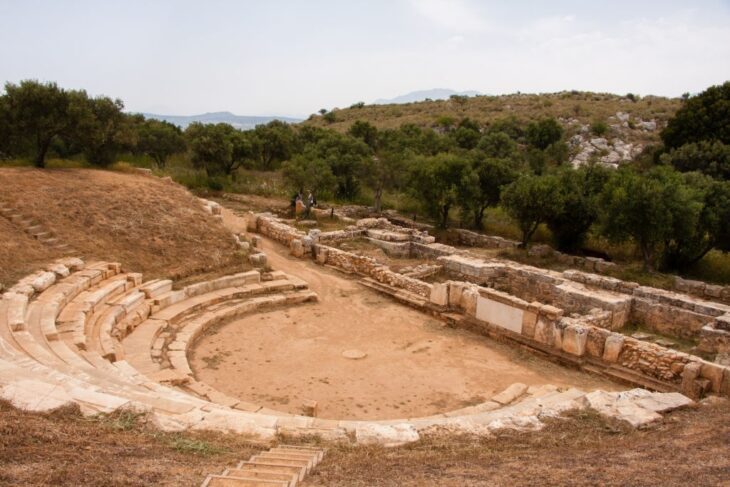
2. Malia Palace Archaeological Site
The Malia Palace Archaeological Site is one of the largest Minoan Palaces in Malia. It is known to be the most provincial out of all the palaces in Malia. The site is located on the North coast of Crete and East of Heraklion. Back then, the site was occupied during the Neolithic and early Minoan period. The first palace was built in 1900 BC, which was later destroyed in 1700 BC. Then, the second palace was rebuilt after the first one was destroyed. It was also destroyed in 1450 BC and was not discovered until 1880. The site is accessible by car through the main road E75 that can take 25 minutes up to 2 hours. It is open Tuesday to Sunday from 8 AM to 6 PM. However, during the winter, tourists only have access to the site until 3:30 PM. Tourists must pay €6, €2 for senior citizens and students, to enter the Malia Palace Archaeological Site and view the artefacts. The artefacts that can be found on the site are the Golden bee pendant, the handle of the sceptre, pithoi and kernos. Additionally, there are different rooms the tourist can explore to know more about the palace.
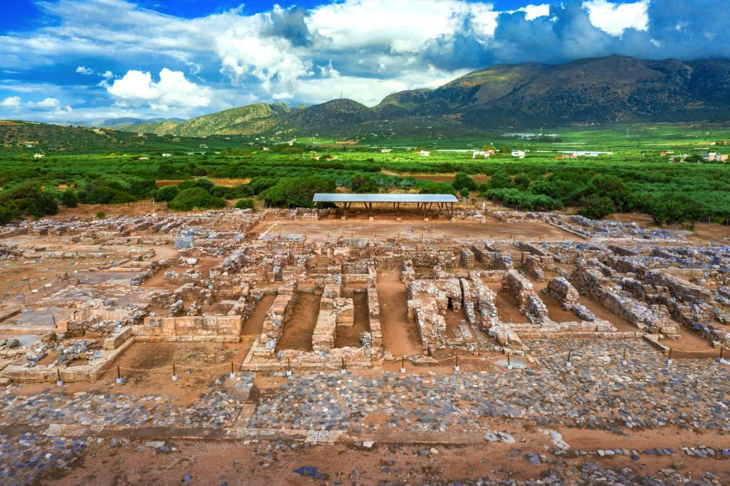
3. Knossos Palace and Minoan Sites
The Knossos Palace and Minoan Sites is deemed to be the most visited archaeological site in Crete. The museum is built on the hill of Kephala that is near the sea, but it was destroyed twice before, in 1250 BC and 1350 BC. But before it was destroyed the second time around, it was restored in 1450 BC. After it was destroyed in 1350 BC, the site was never occupied or renovated any more. The palace is known to be the home of King Minos, the king of Crete and son of Zeus and Europa. The site is a multi-storey flat complex that has four wings around a central court. It is known that the main building of the site was closed in 2006 until 2013 so that it will be renovated. It is open every day from 8:30 AM to 5:00 PM during winter and 8 AM to 8 PM during summer. The entrance fee costs about €15, €8 for senior citizens and students. Some artefacts that can be found on the site include the throne room, royal villa, hospice and temple. The site imposed rules that will ensure tourists will be safe during their visit. They are provided audio tour guides and are required to bring their own earphones for hygienic purposes. Tourists rated the museum 4.0 out of 5, mainly because the site contains so much magnificent information about ancient civilization.
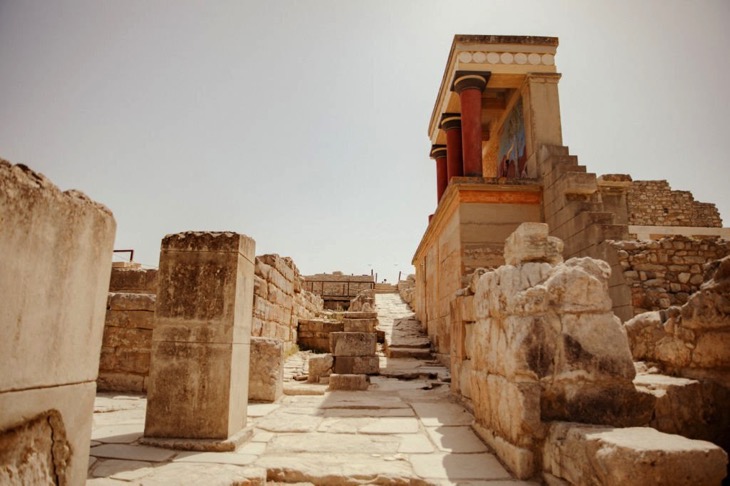
4. Lato Archaeological Site
The Lato Archaeological Site is known to be the best preserved town of the Hellenistic period in Crete. Lato was known as one of the main Doric states in Crete and is the birthplace of the admiral of Alexander the Great. It is one of the powerful cities in Crete that is situated between two hills. There is no public transportation that goes directly to Lato. The nearest place on Lato Archaeological Site where buses stop is Kritsa. From there, Lato is just 3 km away north and can be accessible by foot or private car. It is open Monday to Sunday, except Tuesday from 8:30 AM to 3:30 PM. The entrance fee costs about €3, €2 for senior citizens and students. It is considered as one of the most complete towns in Greece as it has barricades, market, prytaneum, theatre, temples, buildings and cisterns. Prytaneum is a monument that resembles an ancient theatre that can accommodate up to eighty people. The cistern is located in the Agora, an open space wherein ancient sculptures can be found. Tourists rated the site 4.5 out of 5 mainly because of its remarkable site that is built in a mountain which is breathtaking.
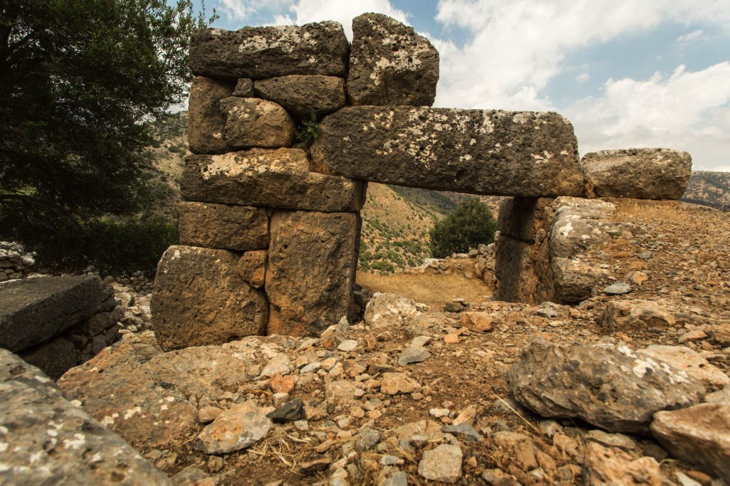
5. Kommos Archaeological Site
The Kommos Archaeological Site is situated on the shore of the Libyan Sea. The site is known to be the place where King Menelaus, King of Sparta, was shipwrecked after the war. The first known excavation was in 1924 by Arthur Evans. During 2005, the second excavations started on the archaeological site by Canadians. Many factors such as earthquakes later destroyed it and was rebuilt after some time. The site’s ancient port can educate tourists about the Minoan Civilization. However, the Kommos Archaeological Site itself is not open to the public. Tourists rated the site 3.5 out of 5 as it is stunningly beautiful and is surrounded by inns, flats and villas.
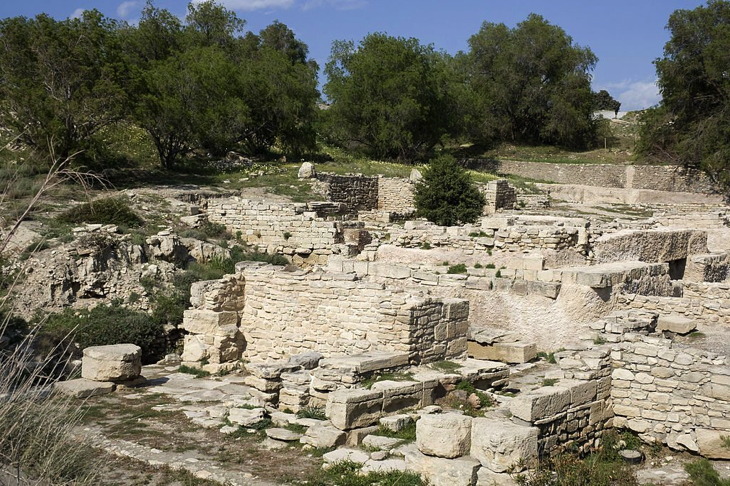
6. Heraklion Archaeological Museum
The Heraklion Archaeological Museum is considered one of the three oldest museums in Greece that is located in the centre of Crete. Furthermore, it is deemed to be one of the most important museums in Europe, as it is the home of all artefacts dating back to Cretan prehistory. Some of the significant antiques that are found in the museum are Mycenaean Warrior Vase, Marble Statue Of A Sphinx, The Boxers Fresco, The Jockey Of Artemision, Nestor’s Cup Or Dove Cup, Marble Statue Of Kouros Kroisos, Marble Statue Of Poseidon and Colossal Portrait Head Of Emperor Hadrian. It is a museum that portrays the history of Crete as the artefacts that belong to the ancient civilization. The Heraklion Archaeological Museum is accessible by bus which takes about 42 minutes, by taxi for 7 minutes and by foot for 1 hour and 12 minutes. The entrance fee costs about €12, €6 for senior citizens and students. It is open Tuesday from 10am to 8pm and Sunday to Monday from 8am to . Inside the museum, the treasured antiques from Europe’s oldest civilizations such as bull-leaping, snake-holding and literacy-busting Minoans artefacts. Additionally, a café and restaurants are available inside the site as well. Hand sanitizing and face masks are a must inside the museums to protect tourists during the pandemic. The best time to visit the museum is from 1:30pm to 8pm. Tourists rated the museum 4.5 out of 5 mainly because of the amazing Minoan artefacts.
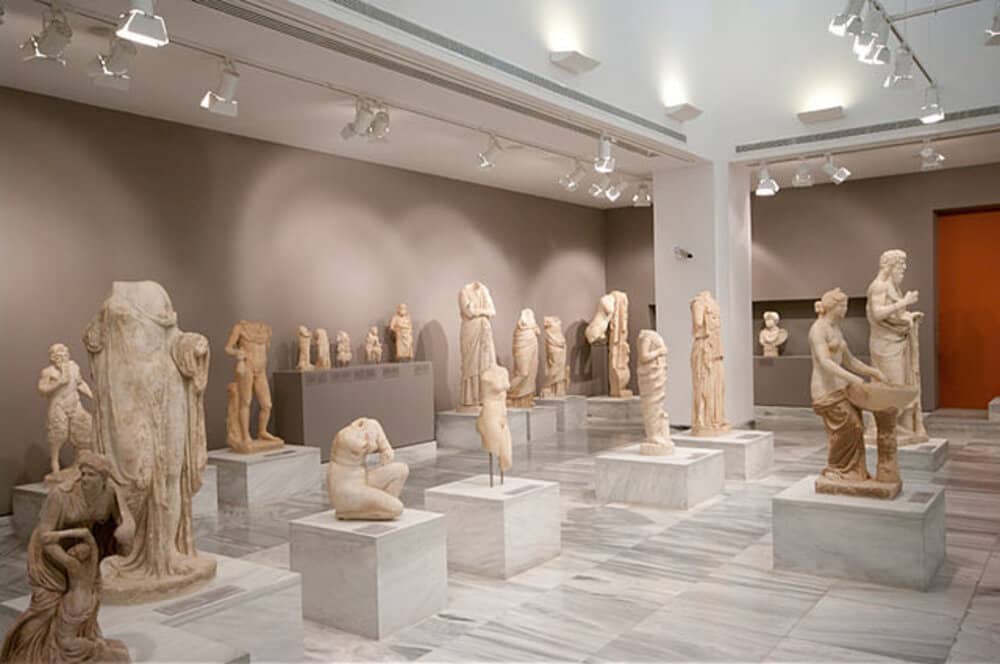
7. Petras Archaeological Site
The Petras Archaeological Site is situated in Sitia in northeastern Crete. It was constructed in 1900 – 1800 BC, which was considered the Middle Minoan period. As of the moment, the south wing of the archaeological site was ruined. It is known to be a two-storey site that has a monumental staircase, lower terrace and central court. The site is known to be the place where administrative, commercial and religious acts are held. Furthermore, the place is known to be where a group of artisans made textiles and pottery such as vases. Petras Archaeological Site is known for its retaining wall, palatial remains, north magazines, hieroglyphic magazines and cult sector of the palace. Sitia has its own airport station, which makes it easier to fly into. However, it can be reached from Heraklion as well by renting a car. The site is open Wednesday to Monday from 8:30 am to 3:30 pm. The entrance fee to the site will cost about €3, €2 for senior citizens and students. Tourists review the site 4.5 out of 5 mainly because of the great information about Greek history that they have learned inside.
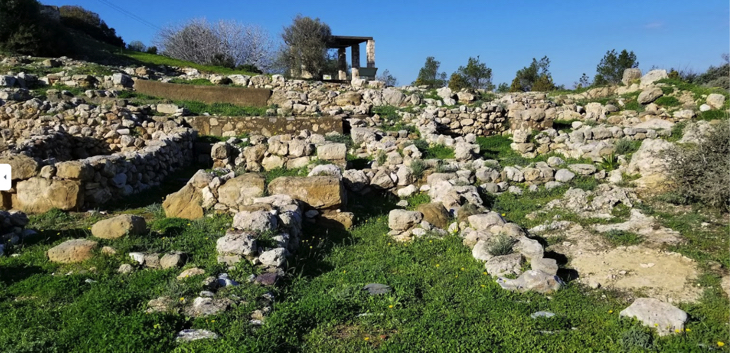
8. Sitia Archaeological Museum
The Sitia Archaeological Museum is considered to be one of the best museums in Crete and was opened to the public in 1984. Nikos Papadakis, a Cretan archaeologist, founded it. It is the home of many essential artefacts from eastern Crete such as Palaikastro, Pseira, Pithoid jar and Black Figure Kantharos. Palaikastro is a 0.50 metre-high gold and ivory statue that came from Seteia. Pseira is a stirrup jar that has a marine type of decoration. These exhibits are from the Minoan, Zakros, Geometric, Archaic and Greco-Roman periods. It is open from 8:30 am to 3:30 pm, except Tuesdays. The entrance fee is €3, €2 for senior citizens and students. The best time to visit Sitia is during summer, as there are more routes that connect Crete to other islands in Greece. Tourists rated Sitia Archaeological Museum 4.5 out of 5 mainly because despite it being small, the museum is very neat and organised.
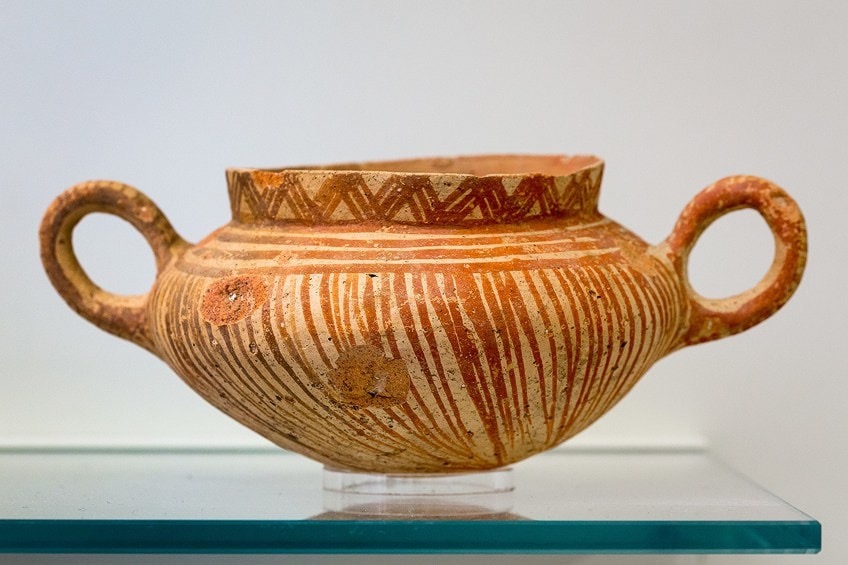
9. Ierapetra Archaeological Museum
The Ierapetra Archaeological Museum is a museum that has been the home of many collections since the 19th century. It features collections such as sarcophagus, stone stele, honorary inscription, red-figure amphora and Minoan axe mould. Most of the artefacts present inside the museum are Minoan, Geometric, Archaic, Greco-Roman, Classical and Hellenistic Arts. It is open Tuesday to Sunday from 8am to 3pm. The entrance fee costs about €2, €1 for senior citizens and students. Children are free to enter the museum. Tourists rated the museum 4.0 out of 5 mainly because the place is outstanding for its price.
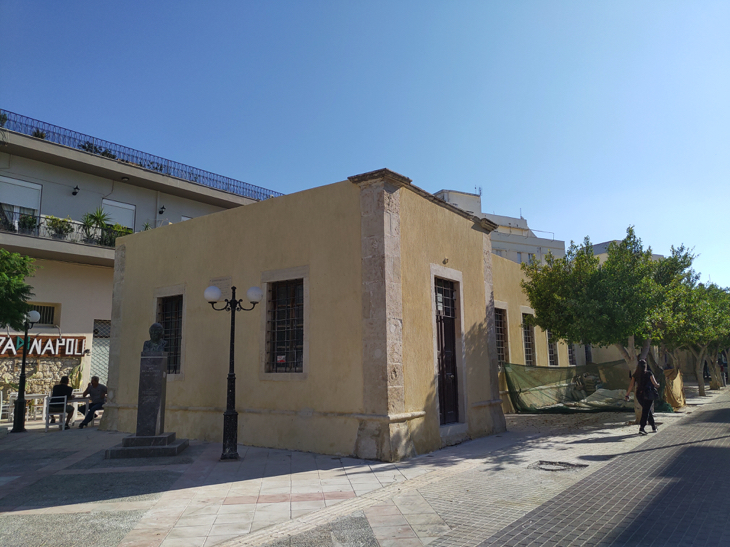
10. Gournia Archaeological Site
The Gournia Archaeological Site is located on the north coast of the Isthmus of Ierapetra in Crete. Found on the site are preserved houses, cobbled streets, court, palace and cemetery. It depicts what a town looks like during the Late Bronze Age. Additionally, bronze tools, pottery and vases can be found on the site as well. The site is deemed to be the most excavated town in Crete. It was founded in 1550 BC but was later destroyed by an earthquake in 1450 BC and was left the way it was in 1200 BC. The site is accessible on the right side of the National Road Agios Nikolaos-Sitia, just a few metres away from Pachia Ammos Village. It is open Tuesday to Sunday from 8:30am to 3:30pm. The entrance costs around €2, €1 for senior citizens and students. Tourists rated Gournia Archaeological Site 4.0 out of 5 mainly because it exceeded their expectations for a minimal admission fee.
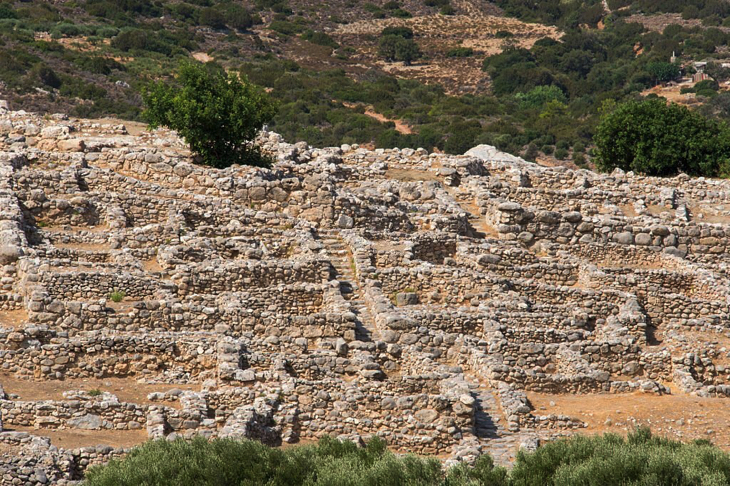
11. Falassarna Archaeological Site
The Falassarna Archaeological Site is a closed ancient port of the Classical and Hellenistic period situated in western Crete. Back in the 4th century, the site protected the city with walls and military buildings. It was considered to be a sanctuary for pirates, as it is the home for 43 archaic graves. The site is open Tuesday to Sunday from 8:30am to 7:00pm. However, the site is currently temporarily closed. Tourists rated the site 3.5 out of 5 mainly because of the fascinating scenery.
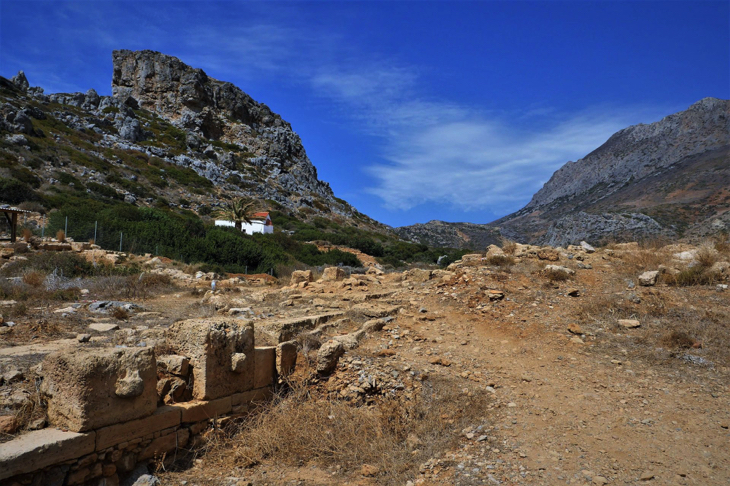
12. Armeni Archaeological Site
The Armeni Archaeological Site is situated in an undisturbed place in the northern east part of Turkey. It is an ancient cemetery that was registered as a 1st Degree Archaeological Conservation Site in 1988. Yiannis Tzedakis excavated it in 1969. The site contains chamber tombs that number over 200. There are two styles of chamber tombs that can be found on the site—large and small tombs. Large tombs have a long pathway, while small tombs have a short pathway. Additionally, these tombs have three distinct types namely circular, semicircular and rectangular. Furthermore, monasteries, a cathedral and churches are found on the site as well. The best time to visit Armeni Archaeological Site is during May to September, which is the peak season of tourism.
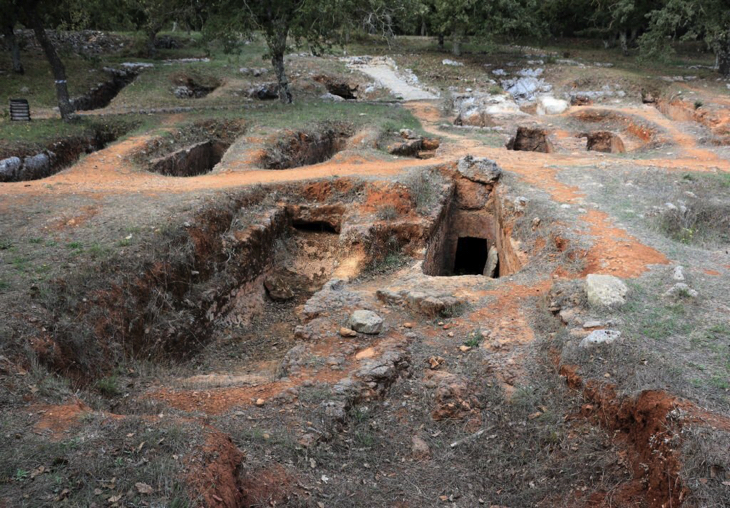
13. Eleftherna Archaeological Museum
The Eleftherna Archaeological Museum houses the archaeological finds of the ancient city of Eleftherna. The Eleftherna Archaeological Museum’s creator and director, Prof. Nikolaos Stampolidis, created the museum with the help of the University of Crete. The museum was officially inaugurated on June 19, 2016.
The Eleftherna Archaeological Museum solely exhibits artefacts from the ancient city of Eleftherna, unlike the Archaeological Museum of Rethymno, which features things from a wider variety of places nearby. The museum seeks to provide visitors with a comprehensive grasp of the city’s civilisation, but the Rethymno Museum offers a more varied archaeological experience spanning many historical eras and places in the area.
The archaeological artefacts that visitors see in the Eleftherna Archaeological Museum are architectural fragments, figurines, inscriptions, pottery, jewellery, and weapons. The Eleftherna Archaeological Museum is situated in Epar.Od. Aggelianon-Elefthernas 123, Eleftherna 740 52, Greece.
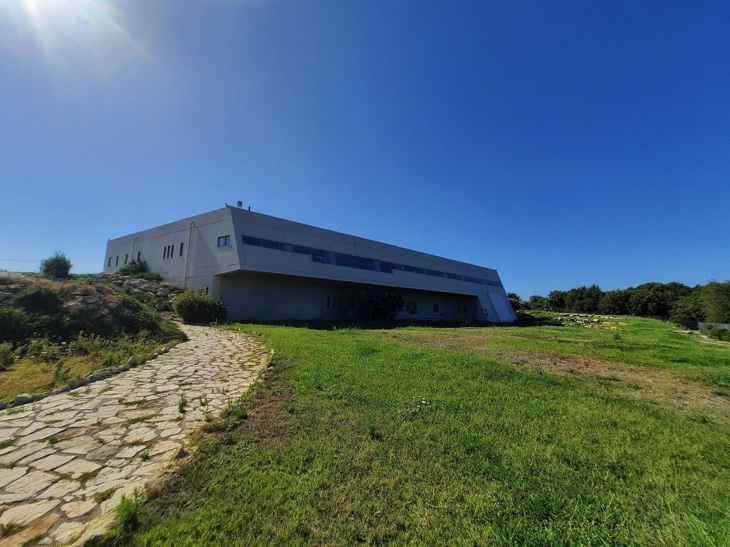
The Eleftherna Archaeological Museum showcases the artefacts and archaeological discoveries from the ancient city-state of Eleftherna, a major trading centre. The Eleftherna Archaeological Museum is located on the Greek island of Crete, near the village of Eleftherna.
Eleftherna Archaeological Museum displays architectural fragments, figurines, inscriptions, pottery, jewelry, and weapons that reveal the culture and lifestyle of ancient Eleuthernians.
The architectural fragments, including friezes and column capitals, highlight the city’s construction techniques and architectural achievements. The figurines, crafted from clay and other materials, depict daily life, religious beliefs, and mythical creatures, shedding light on ancient social customs and spiritual practices.
Inscriptions, carved on stone tablets and other surfaces, document the city’s administrative practices, laws, and personal or communal dedications. Pottery exhibits range from small cups and bowls to large storage jars, showcasing craftsmanship from the geometric, orientalizing, and classical periods.
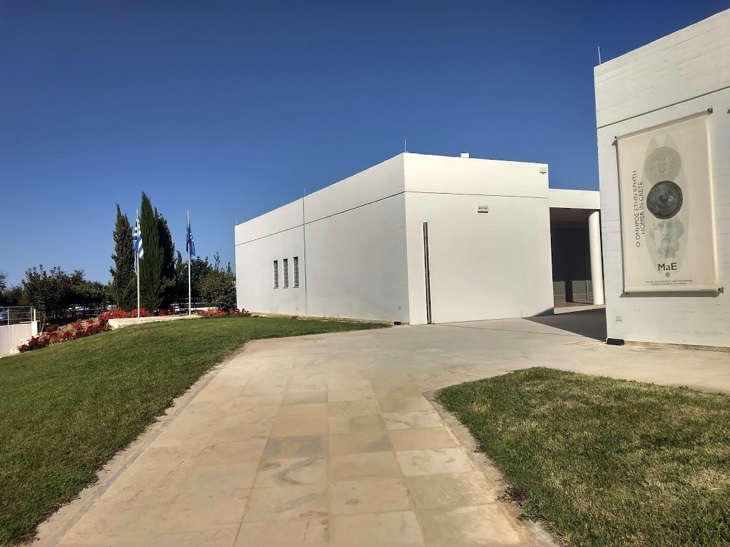
The jewelry collection features intricate gold, silver, and gemstone pieces, including pins, necklaces, earrings, and rings, reflecting the artistic preferences and skills of ancient Eleuthernians. The weapons display, with swords, spears, and arrowheads, underscores the city’s military strength and defensive capabilities.
Admission to Eleftherna Archaeological Museum and its archaeological site costs €8.00 ($8.50, £7.00), with a reduced ticket price of €4.00 ($4.25, £3.50) for eligible visitors. Entry to either the museum or the site alone costs €6.00 ($6.40, £5.20), reduced to €3.00 ($3.20, £2.60). Visitors paying the €4.00 or €8.00 fee can access both facilities without needing to choose between them.
14. Ierapetra Archaeological Museum
The Ierapetra Archaeological Museum, located in Ierapetra, Lassithi, Crete, offers a small yet impressive collection of antiquities displayed within the historical Ottoman Commercial School building, established in 1899. The museum is operational since 1986 and provides visitors with a peaceful atmosphere, contrasting with Crete’s busier destinations. Ierapetra experiences a warm Mediterranean climate, averaging 30 ℃ (86 ℉) in summer, with most rain falling in winter.

The Ierapetra Archaeological Museum’s origins trace back to the late 9th century when Ierapetra residents formed the Educational Club of Ierapetra to collect and preserve local antiquities. The museum’s collection spans from the 3rd millennium BC to the 5th century AD.
The Ierapetra Archaeological Museum displays a range of artifacts that highlight the historical and cultural richness of the region.
The coin collection primarily consists of silver coins, showcasing intricate coin engraving. Geometric art is limited in the museum due to the scarcity of geometric sites in the area, but it includes figurines and vases from the 9th–8th centuries BC. A significant piece of Minoan art is a clay larnax found in Episkopi in 1946 by Professor N. Platon.
The museum houses two important inscriptions reflecting Ierapetra’s political history: one documenting an alliance with Antigonos of Macedonia and another establishing equal civil rights with the Arcadians.

Archaic art exhibits are few, featuring mainly figurines and terracotta votive plaques in relief. Classical and Hellenistic art are displayed together, illustrating the development of Doric Hierapytna and its influence on the broader Greek world.
Greco-Roman artifacts reflect local artists working under Roman influence, with several decorated lamps as examples. The museum’s sculpture collection includes life-size statues and smaller statuettes from the Roman period.
Which is the most visited Archaeological Museum in Crete?
The Heraklion Archaeological Museum is the most visited Archaeological Museum in Crete because it is considered as the oldest and most important museum in Europe. Additionally, it is the most famous museum. The museum is the home of 7,500 Minoan artefacts that are about 5,500 years old, which makes it one of the largest museums in Greece as well. Tourists considered the museum as the most interesting museum in Greece.
What do you need to know about Crete as a tourist?
Crete is the largest island in Greece that is located in the southernmost part of the country. The island is known to have many beautiful beaches, cuisine and museums. The place is the home of one of the World Heritage Sites and 7 Wonders of the World. Tourists may find the place fascinating and may want to visit some sites mentioned above. However, tourists need to keep in mind the Crete Travel Guide before going to Crete and during their stay on the island.
Listed below are the things tourists need to know about Crete.
- Transportation: There are few transportation options available to travel to Crete and around Crete itself. First, going to Crete can be done via aeroplane or ferry. Crete has three airports, namely Heraklion International Airport, Chania International Airport and Sitia Public Airport. The airport station must be chosen wisely based on the desired tourist spot, as the island is big. Ferries such as Rhodes, Karpathos, Kassos and Khaliki are other options for travelling to Crete. Second, there are a few options to consider when travelling around Crete. Bus, taxi and rental car are the options tourists can opt for to go around Crete and visit some tourist spots.
- Accommodation: There are different accommodations where tourists can stay during their visit in Crete. There are many hotel options, especially in Chania, which is the most recommended place for first time tourists to stay in.
- Time: Mid-May to June and September to October is the best time to visit Crete. During May is the time when flowers bloom. September to October is the time when the rates of room are the lowest.
- Costs: The costs of visiting and staying in Crete should be considered as well. Accommodation, Food, Activities, Entertainment and Transportation are just a few of the things that contribute to the costs of visit and stay.
- Place: There are a lot of beautiful places to visit in Crete like Chania, as it is close to beautiful beaches, restaurants and shops.
- Things to See/Do: There are other things to do besides going to archaeological sites in Crete. Hit Balos Beach is a place to go for a swim that features white and pink sand. Wine tour is another activity to do in Crete as it is one of the oldest wine-producing places in Europe.
Do you need to rent a car to visit Crete Archaeological Museums?
Yes, renting a car is a necessity to get around Crete and visit archaeological museums. There are museums in Crete that public transportation does not stop at. Public transportation sometimes only stops at the nearest station to the museums, so tourists take a taxi to take them to their destination.
What are the factors to consider before renting a car in Crete?
There are buses and taxis available that tourists can use to travel around Crete. But another type of transportation is Car Rental, which is a more private mode of transportation. Car rental, most of the time, is a must when going around and travelling in Crete. Tourists need a car for them to be able to reach archaeological museums and other destinations they wish to visit. There are different car rental companies that tourists can opt to rent their car in Crete during their stay. It is a great option for those who want to have private transportation when going to their destination, especially during the pandemic.
Listed below are the things to consider before renting a car in Crete.
- Insurance: Make sure that the car has insurance that will cover the damage that may be caused by any possible accidents.
- Driver’s Age: The driver should be at least over 21 years old and has a driver’s licence for about 12 months.
- Driver’s Gender: Some tourists can be picky regarding who will be their driver. Gender of the driver is one of the things that tourists consider, as many people believe that men are better drivers than women.
- Car Type: There are different car types that are available to be rented. Each type caters to a different number of passengers and the amount of bags they can carry.
- Documents: Other than having a driver’s licence, a credit or debit card is a must to rent a car. A credit or debit card with the tourist’s name is needed to provide the rental car company guarantee.
How much does a car rental in Crete cost?
Car rental costs depend on how many days that car will be rented, the number of passengers and the type of car that will be rented. A rental for a week can cost around €250. Day trips and night trips in Crete will cost about €30 to €40. It can be used for a week with unlimited mileage and four-seaters. The rental cars are manual transmission, air-conditioned and have four doors. The rented car should be returned to the company with the same amount of fuel as at the start of the trip to avoid charges.
Do you need a map when visiting the Archaeological Museum in Crete?
No, a map is not needed when visiting the archaeological museums in Crete. It is because public transportation, like buses and taxis, can lead tourists directly to museums. According to Crete History, places in Crete are already famous, especially to locals. It’s easier for tourists to just ask the locals where the place is. However, if the tourists opt to use a private rented car, they might need to use Google Maps in order not to get lost along the way.
Is public transportation in Crete reliable?
Yes, public transportation in Crete is reliable as these are used to travel around Crete. There are transportation such as buses and taxis that can be used to go to different destinations in Crete. There are a total of four bus stations in Crete namely Heraklion, Chania, Rethymno and Lassithi. However, these buses do not stop directly at certain destinations. Thus, taxis can be used as a means of transportation to reach places like museums.
Where can you find low-cost Car Rental in Crete?
Rental Center Crete is a car hire company that has supplied the towns in Crete with cars ever since 1975. Tourists can hire cars in airports, ports and different cities and towns all over Crete. The company includes premium insurance for their rental cars that ensures that there will be no hidden fees. Additionally, the company offers free 24 hour airport pickup and drop-off with free cancellation for up to 48 hours of arrival on the island. Furthermore, the company gives tourists a free baby seat for those who brought their baby with them. There are different Crete car rental options for tourists to choose from. The car options range from €18 to €49 depending on the size and type of car that will cater to different numbers of passengers.
Last updated on February 12th, 2025















